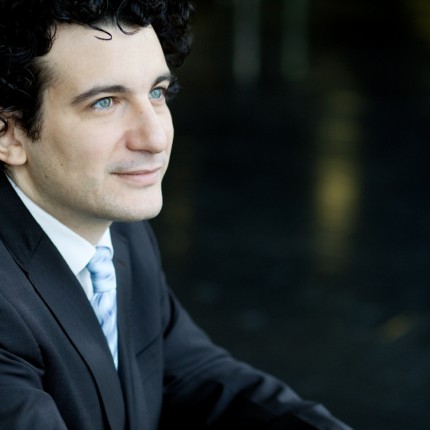French conductor strikes sparks in CSO debut

The Chicago Symphony Orchestra has returned from what by all accounts appears to have been a highly successful West Coast tour. This week’s bifurcated schedule offers two programs, one a lightish French program, the second a bracing lineup of Stravinsky and Schoenberg.
Alain Altinoglu made an impressive Lyric Opera bow last season leading performances of Bizet’s Carmen. In his CSO debut Thursday night, the French conductor sparked equally dynamic performances in a program of compatriot composers, pairing populist works by Bizet and Chabrier with a decided curio, La tragedie de Salome by Florent Schmitt.

In the wake of the furor over the French premiere of Richard Strauss’s Salome in 1907, there was a ravenous public appetite in Paris for all things Salometric. Florent Schmitt was commissioned to write a Salome ballet the same year for the American dancer Loie Fuller (born Marie Louise Fuller in Hinsdale). Four years later, Schmitt retooled La tragedie de Salome into a two-part symphonic poem, cutting the hour-long ballet by half in duration while greatly expanding the orchestration.
La tragedie de Salome may not be a masterpiece yet it’s a compelling, smartly orchestrated and often audacious work. Perhaps its greatest significance is the fascinating snapshot it provides of the roiling Paris music scene in the early 20th century.
Stravinsky called Schmitt’s score “one of the greatest masterpieces of modern music,” a judgement he later, rather embarrassedly, stepped away from after a falling out with his former friend. Yet La tragedie de Salome clearly provided inspiration for Stravinsky’s contemporaneous Rite of Spring in its wind writing and rhythmic fury. Schmitt wasn’t above borrowing himself with some jarringly bald cribbing from Debussy’s La Mer—premiered just two years earlier—in the “Enchantments of the Sea” section.
La tragedie de Salome is clearly a score that Altinoglu believes in and the conductor inspired the CSO to their finest efforts in a rousing and luxuriant performance. Schmitt’s work hasn’t been played by the CSO since Desire Defauw conducted it in 1945, and the galvanic performance heard Thursday night had all the freshness of discovery.
The opening Prelude was notably atmospheric with evocative solos by English hornist Scott Hostetler and clarinetist John Bruce Yeh. The ensuing “Dance of the Pearls” segued fluently from hazy languor to a massive orchestral climax. The concluding “Dance of Terror” ratcheted up the intensity even more, closing in a resoundingly forceful peroration, with Altinoglu’s acute balancing ensuring striking transparency even in Schmitt’s most untrammeled moments. Kudos to Altinoglu for reviving this historically significant work and providing such confident and idiomatic direction.
Just as he had shown a clear sympathy with Bizet in last season’s Carmen at the Lyric, Altinoglu showed a similarly deft hand with the composer’s Symphony in C. Written at age 17 and lost for eighty years, this astonishingly confident work has all the youthful verve and lyric freshness of Bizet’s operas to come.
Altinoglu took a somewhat weightier approach than one might expect from a French conductor in this music, yet with no lack of graceful charm or effervescent spirit. Eugene Izotov floated a lovely rounded oboe solo in the Adagio and Altinoglu’s fluent direction and textural clarity brought out the galumphing charm of the scherzo as well as the fleet vivacity of the closing movement in an airy and delightful performance.
The concert led off with Chabrier’s greatest hit—actually, his only hit—Espana. Altinoglu led a fizzing, brightly colored yet dynamically nuanced account of this thrice-familiar showpiece that elegantly skirted bombast.
The program will be repeated 8 p.m. Friday. cso.org; 312-294-3000.
Posted in Performances




